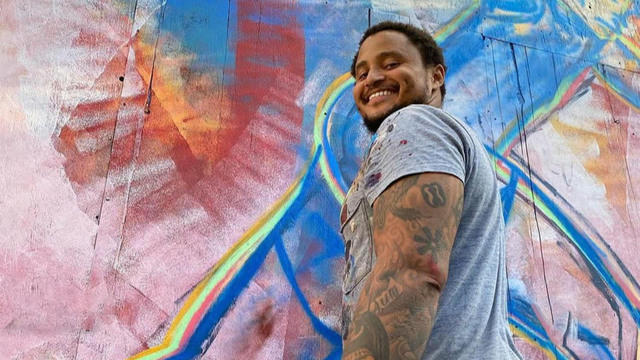Last summer, when thousands took to the streets of Chicago to protest the murder of George Floyd, many businesses started hanging plywood over their windows and doors. The plywood blanketing storefronts became a canvas of sorts for South Side native Barrett Keithley.
“When people looked at all the abandoned businesses, it was citywide, nationwide. But a lot of us have grown up in those neighborhoods looking like that,” Keithley told CBS News’ Nancy Chen.
The son of a police officer, Keithley is also a self-taught artist and co-created an initiative called “Paint the City.” He said 60 artists joined the effort from all sides of Chicago. The art was their way to support the Black Lives Matter movement and change the city’s landscape.
“It’s definitely a moment in history that can never be forgotten because the manuscripts are these boards. And it’s very much still ongoing,” Keithley said. “We made it our mission to heal the city through art.”
That mission is taking a new form. This Saturday, on Juneteenth, the colorful plywood that once symbolized a closed community will go on display at Chicago’s DuSable Museum of African American history.
“Even the protesters knew not to vandalize the artwork. They just left it alone. It speaks to the cohesiveness that not only were we doing this in Chicago but there were other people doin’ it around the country,” Keithley said.
In New York, sculptures created from salvaged boards were unveiled last month as public art in each borough. Manhattan artist Neil Hamamoto and his nonprofit “Worthless Studios” offered to remove the plywood from businesses for free.
“As the protests subsided, that plywood was just being thrown away, and we were sort of trying to come in as a solution for them to recycle and upcycle that material,” Hamamoto said.
“Worthless Studios” selected five New York City artists for the “Plywood Protection Project” — and Tanda Francis among them. Her 360-degree sculpture, Rockit Black, in Queens celebrates black identity. The silhouette portrays a goddess inspired by a rocket propelling up.
“The work that I do is using the color black and making it known to be grand and beautiful, and a divine presence,” she said.
The artists are reshaping the remnants of a reckoning and telling a story in their vision.
“It [art] has the power for me to reach you, and I don’t even have to see you. I don’t even have to speak to you,” Keithley said. “But you can see a piece that any artist has done, and you can just be moved by it.”


































